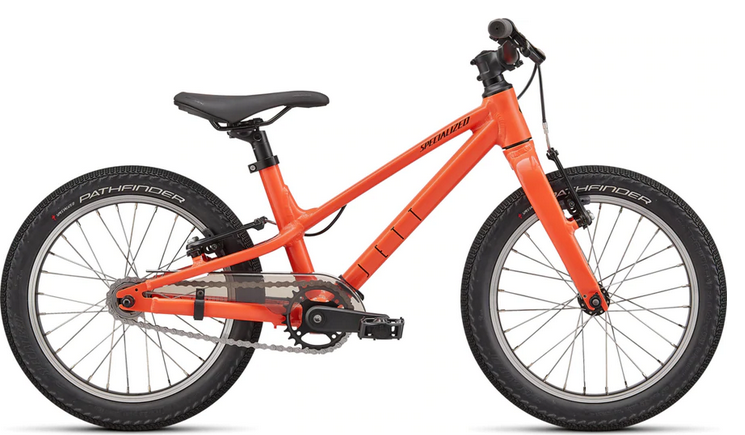
Converting a mountain bike to a single-speed can be ideal if you are uncomfortable handling several rates or find maintaining your best quality MTB challenging.
A single-speed bicycle simplifies riding; you only concentrate on driving without constantly changing gears while not supporting significant maintenance fees that can impact yur budget.
Why Are Single-Speed Bikes Better Than Other Options?
A single-speed bike is more straightforward to ride and maintain than one with many gears.
One gear lets the rider focus more on techniques than continue changing the gear as you advance on the trails.
According to mountain bikers, single bikes would aid them in gaining more strength and muscles on challenging tracks.
A single-speed bike’s maintenance is also easy. It requires standard check-ups: inspect the bearings, brake pads, and wheels.
Preparations.
Spacer kit to make a straight chain line on your mountain bike.
- Rear cog to replace your cassette sprocket; you can use a 16-tooth rear cog.
- A single bike commonly has 1x chainrings; you will probably need 2x or 3x chainrings for your mountain bike.
- A tensioner to keep the chain nice and tight on the rear cog and front chainrings; you probably won’t need this tool, depending on your frame dropouts.
- You can use your current chain by adjusting it unless it needs replacement.
Besides these parts, ensure you have a chain tool, chain whip, lockring tool, Allen wrenches, twists, and screwdrivers.
RELATED: The ten best Giant mountain bikes for men in the US.
Remove Unnecessary Components.
A single-speed bike won’t need shifters, shift cables, or front and back derailleurs; you can remove them from your mountain bike.
Use Allen wrenches and screwdrivers to remove unnecessary parts from your bike. Loosen the bolt with an Allen Wrench or a screwdriver.
First, remove the handle grips from the handlebar, then the shifters and pull the housing from the frame can remove them for shift cables and housing.
Afterward, use a wrench to release the connections from the front and rear derailleurs before anything else.
If your shift cables are in the tube, you can pull them out; otherwise, cut cable ties that hold the housing on the frame to remove them.
- Break your chain with the tool to remove the front and rear derailleurs.
- Remove the rear wheel to install the wheel axle and snug a wrench around the axle nut.
- Use a chain whip tool to hold the cassette in a clockwise direction and opposite to remove the lockring.
Rear Cog Installation.
You must also install the rear cog; use a spacer kit to align the part with the front chainring.
Position the spacers on the rear wheel before the cog to align it with the front chainring, then slightly tighten the lockring. You can also buy a new 1x chainring.
Afterward, put the wheel axle into the frame dropouts and lay the chain across the cog and front chainring.
Also, make other significant checks, including the chain straightness, spacer, rear cog’s position adjustment, etc.

Installing Chain.
In the next step, install the rear cog; be cautious about straightening your chain line. A spacer kit efficiently aligns the rear cog with the front chainring.
To avoid throwing away your old front chainrings, use a screwdriver to remove them from the drivetrain and keep the top chainring.
If needed, buy a new 1x chainring and install the part properly after removing the pedals with a wrench.
You must also position the spacers on the rear wheel before the cog to align it with the front chainring and slightly tighten the lockring.
Afterward, put the wheel axle into the frame dropouts and lay the chain across the cog and front chainring.
Check if the chain line is straight to readjust the spacer and rear cog’s position.
Place a straight edge parallel to the front chainring surface, extending towards the rear cog to ensure the line is straight.
Finally, inspect the distance between the chain and the straight edge to see if you have done everything suitably.
Also, the best mountain bike helmets are worth it; they suitably protect riders against road accidents.
The Content Final Thoughts.
That’s what we can tell about how you convert a mountain bike to single-speed; we hope this content is helpful.
Besides following the steps with suitable tools as outlined, you must have the skills to perform the process correctly.
Ensure you can adequately remove the unnecessary gears to create a simple and efficient bike; you can also ask someone else to make the necessary changes.
Excellent post, good content on the subject, and great details on the process of changing a mountain bike to that of one-speed.
There were only one-speed bikes back in my younger days, but I haven’t ridden for many years, and I can see that many things have changed. Thank you for sharing this informative article.
Thank you for your comment.